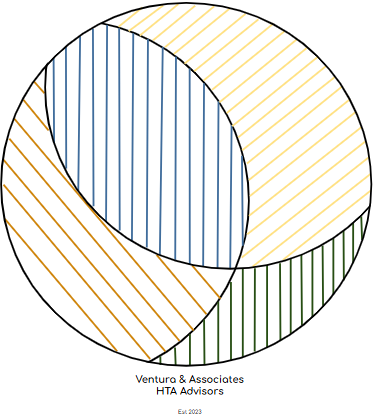Narrowing Development Landscape in the U.S.

The global pharmaceutical industry is in the midst of both headwinds and tailwinds from macroeconomic and political pressures, now facing a convergence of powerful forces that are reshaping and potentially narrowing the drug development landscape for manufacturers. These forces are influencing everything from organizational culture to crucial R&D investment decisions.
Global economic uncertainty, marked by persistent inflation, rising interest rate increases and the specter of potential recessions, is creating a challenging operating environment for drug manufacturers. Inflation increases the cost of raw materials, manufacturing, and clinical trial operations worldwide. Rising interest rates make borrowing more expensive, increasing the cost of capital needed for long-term, high-risk R&D projects and biotechnology start-ups. Needless to say, the impacted stakeholder group is as broad as can be.
In response to these pressures and investor expectations, many pharmaceutical and biotechnology companies have undertaken cost-cutting measures, including significant layoffs across various functions, sometimes impacting R&D personnel. While intended to improve financial efficiency, these layoffs can have detrimental effects on organizational culture and the very foundation of scientific endeavors they once set out on. They can erode employee morale, foster an environment of insecurity, and potentially lead to a more risk-averse culture where pursuing bold, unconventional research paths becomes less appealing than focusing on lower-risk, later-stage assets or established platforms. Such a cultural shift, driven by economic necessity, can inadvertently stifle the very innovation needed for breakthrough therapies.
Faced with higher operating costs and a more cautious investment climate, companies are scrutinizing R&D portfolios and their teams more stringently, prioritize projects with clearer commercial potential and shorter timelines, and potentially reduce overall spending on early-stage or exploratory research.
Adding a significant layer of complexity and risk to subconscious or actual R&D investment calculations are where the damage is done. What set out to be a cost containment measure for the public system and individuals with out of pocket costs has now caused significant uncertainty because of the political tension over its legality and resistance from manufacturers preserving their operating margins and bottom-line. The Inflation Reduction Act (IRA) of 2022 though complex, was a timely provision allowing Medicare to negotiate prices for certain high-cost drugs, implementing inflation rebates, and redesigning Medicare Part D benefits. The resistance now lies in that Manufacturers argue that these measures reduce potential future revenues, thereby decreasing the financial incentive to invest in research and development for certain classes of drugs, particularly small molecule drugs with longer market exclusivity periods before negotiation, or those targeting conditions primarily affecting the Medicare population. The challenge is actually that the negotiation process has not been well characterized and can be seen as a steps towards centralized healthcare systems.
Compounding this uncertainty is the potential for further legislative action that the Trump Administration has now formally put forth. Proposals related to drug pricing, including concepts like international reference pricing (linking U.S. drug prices to lower prices in other countries) or expanding government negotiation powers, have been put forth in various legislative discussions and will come into effect in Q3 2025. The mere threat or possibility of such legislative expansion, creates significant policy risk that manufacturers must factor into their long-term R&D planning, potentially leading to further prioritization of investments away from areas deemed most vulnerable to future price controls. Zooming out, we expect them to deliver on late phase candidates and invest in their pipeline and platforms, but question whether expectations around inflation reduction, Medicare negotiation, and 340B procurement can be upheld all at the same time.
Lastly, early-stage biomedical research has been funded by public sector institutions (such as the NIH in the U.S. or the MRC in the UK). This publicly funded research often lays the groundwork upon which manufacturers build their drug development programs. These study sponsors often investigate combinatorial regimens that companies cannot invest in and, in turn, contribute directly to the advancement of clinical understanding of diseases. However, in the current fiscal and increasingly esoteric political environment, there are often threats or debates around reducing funding for public research programs or shifting priorities.
Should public sector funding for basic science diminish or become less reliable, the funding for earlier, higher-risk discovery research shifts. We believe that this will push manufacturers to invest more heavily in fundamental research themselves, a change that they are well accustomed to under other causes like lead candidate identification, M&A, or asset failures. It could also bring forth greater involvement from shared interest groups, such as disease-specific foundations or industry-led consortia to issue guidance through the political turbulence, or even investment banking institutions to fill the funding gap.
These factors collectively encourage a more cautious, less exploratory R&D culture and strategy. Manufacturers are more likely to focus on de-risked assets and therapeutic areas with more predictable market access pathways, potentially impacting the diversity and long-term pipeline of innovative new medicines. We will take a deep dive into advanced therapies in a later article.
